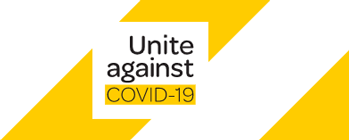What you need to know about
COVID-19 | Click here

What you need to know about
COVID-19 | Click here

Thursday November 29, 2012 09:31
The government has appointed an independent taskforce to undertake a review of current Health & Safety legislation, how this is implemented by employers and what effect it has on the safety of our work environment in New Zealand. The taskforce has to report its findings to the Minister of Labour by the 30th April 2013.
Below is a brief summary of the consultation document recently released. The full document (88 pages) can be found at www.hstaskforce.govt.nz
The chair of the taskforce, Rob Jagar, has stated:
“the taskforce’s recommendations need to change New Zealand’s unacceptable and unsustainable workplace Health & Safety record “
Add this, to the governments stated ambition for the taskforce, “that the recommendations of the taskforce should contain a package of practical measures which result in at least a 25 percent reduction in the rate of workplace fatalities and serious injuries by 2020”.
These are big objectives; so why does the government believe New Zealand businesses and their workforce need to become more aware of Health & Safety in their workplace?
So how do we compare to other similar countries?
Our record in New Zealand is very poor, compared to other OECD countries.
In total 76% of workplace injuries are caused by:
Where do most claims originate?
As at February 2011 the self employed and companies employing 19 or less employees accounted for 97% of all businesses in New Zealand and 40% of all employees. There is some anecdotal evidence that the self employed and SME’s are likely to have more accidents than medium and larger organisations.
While the average entitlement claim rate per 1000 employees for ACC is 15% across all industries, there are a group of industries which stand out:
While forestry, fishing and mining are all high risk industries, the low numbers of employees engaged in these sectors means they make up a relatively low proportion of entitlement claims.
By contrast 54% of all ACC entitlement claims made between 2003 and 2008 came from
These industries are also dominated by the self employed and SME’s with 19 employees or less.
The indicators show, that many New Zealand businesses do not on average, perform as well in Health and Safety, as companies in other countries.
So Who Gets Hurt or Suffers Ill Health?
Interestingly these patterns of injury are not unique to New Zealand, with similar patterns appearing in some, although not all other OECD countries.
What do other countries do differently?
There does seem to be some correlation between countries / jurisdictions, where the likely hood that non-compliance will be detected and the penalties which apply are high, do result in lower accident levels. The first prosecutions for corporate manslaughter are now underway in the UK and this has led to a greater level of focus on safety in board rooms and by senior management of companies in the UK.
It is a reasonable bet that the outcome of this review will be:
More than ever before it appears the current government is serious about reducing both the social and financial costs which result from workplace accidents.
Did you know?
ACC will assist with the funding of courses to train your Health & Safety reps.
You can click on this link http://www.acc.co.nz/preventing-injuries/at-work/health-and-safety-in-the-workplace/health-and-safety-representatives/index.htm to read more.